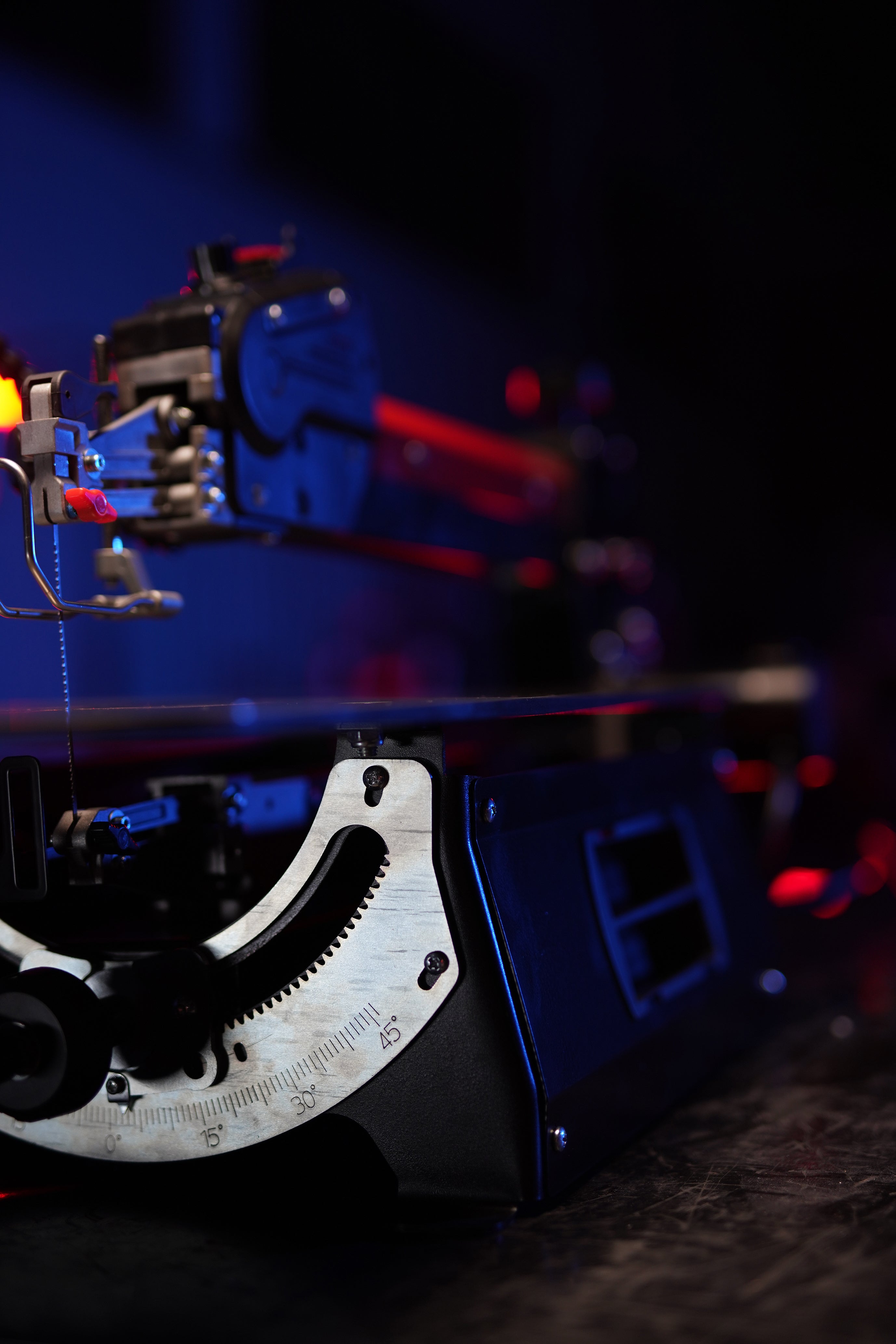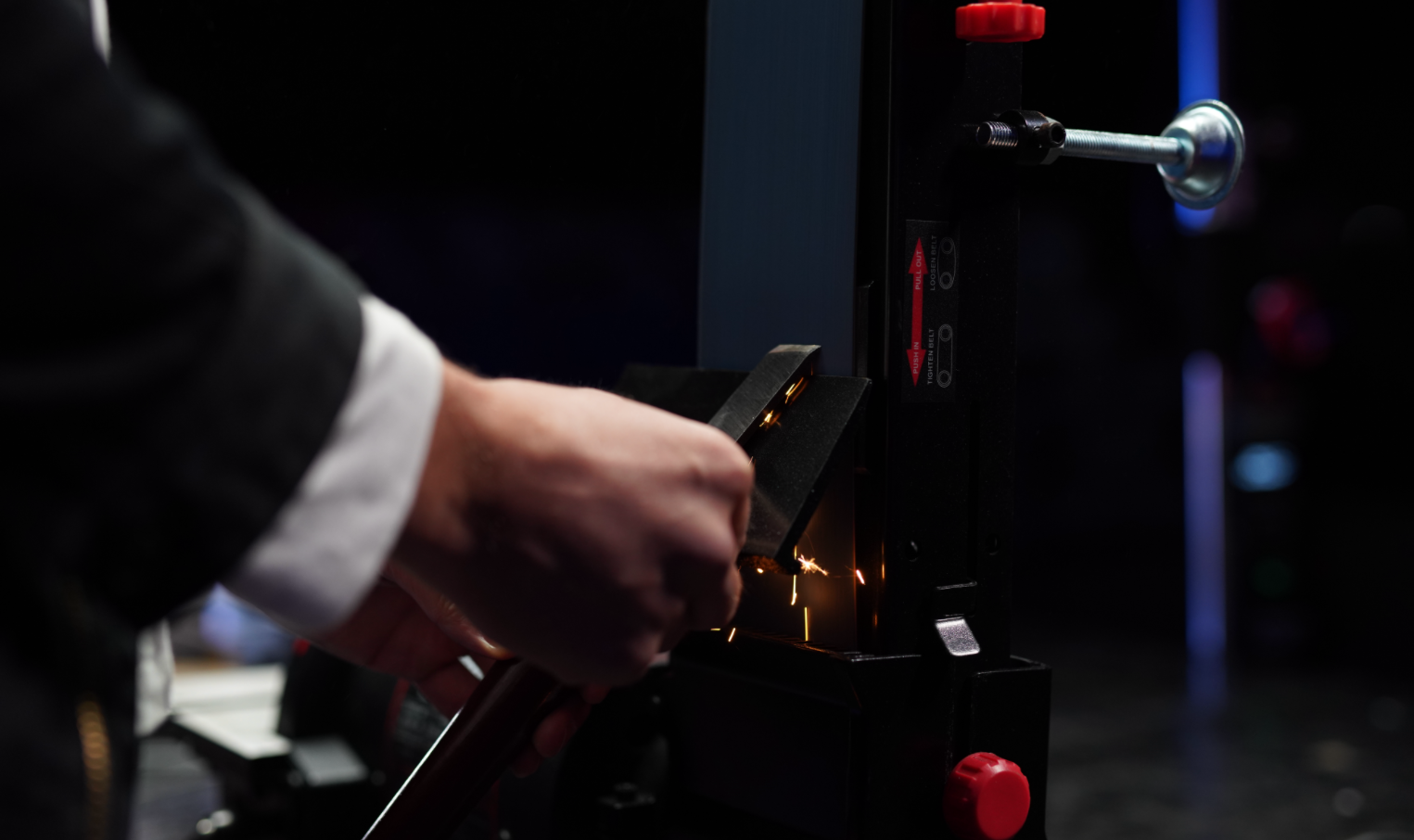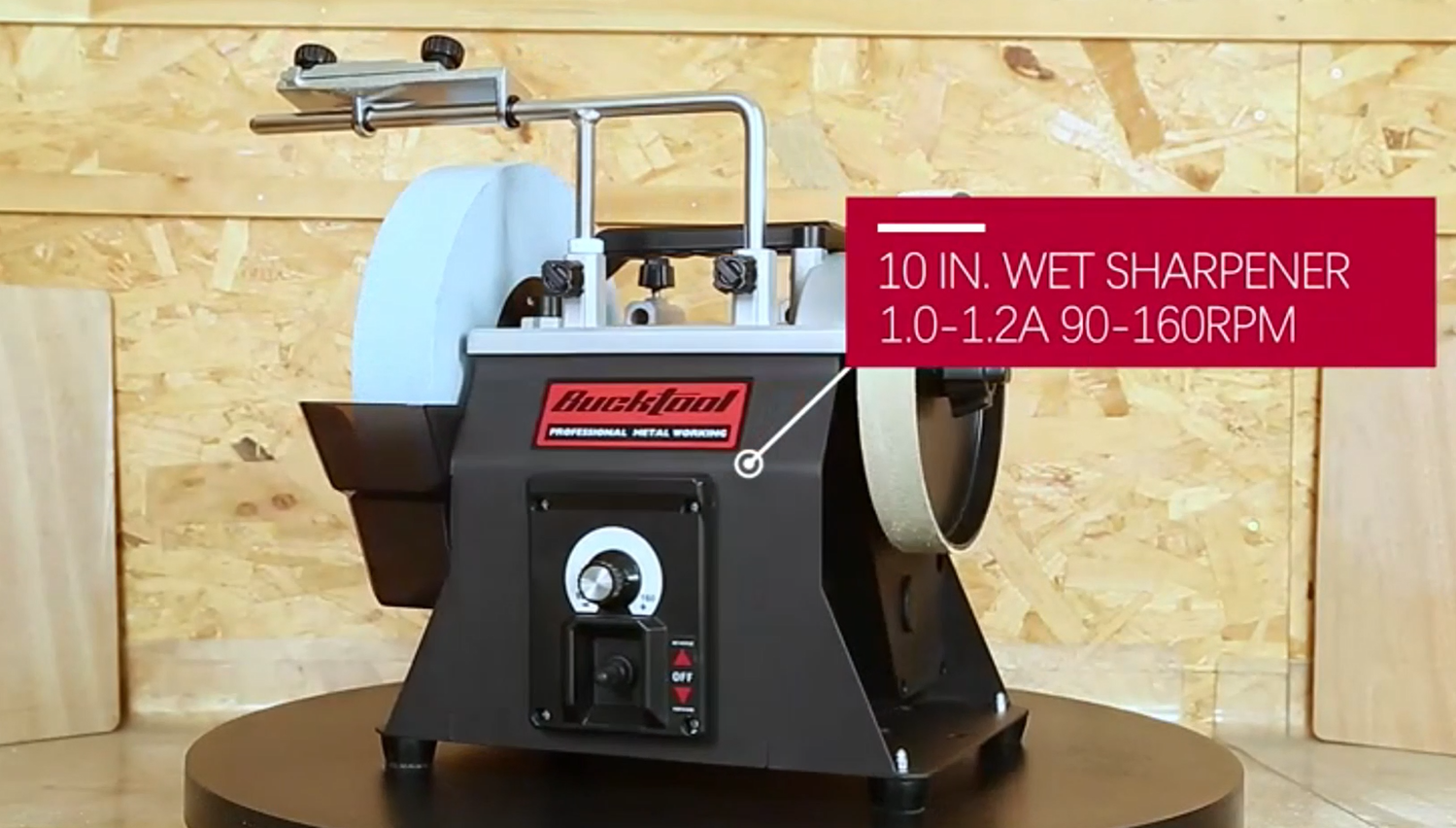
Choosing A Scroll Saw from Bucktool Power Tools
Parallel Arm design–Two arms run parallel to each other with the blade attached to the ends of each arm. There are two pivot points used in this design, and the blade moves in a nearly true up and down motion. This is the safest of the modern saws because when the blade breaks, the top arm swings up and out of the way, stopping immediately.
Blade types: There are two major kinds of scroll saw blades: pin-end and plain or flat-end. Pin-end blades have a pin at each end of the blade in order to hold it in place. Plain end blades are simply plain and require blade holder to hold the end in place.
Thickness of cut: This is the maximum cutting thickness you can cut with the saw. Two inches is about what most saws will cut; most cuts will not be over 3¼4″ thick.
Throat length(Cutting capacity): This is the distance between the saw blade and the back of the saw. Bucktool 16 inches to 22 inches is about as large as 95 percent of all projects require, so unless you have some very unusual needs, the extra throat length is not necessary.
Table tilt: The ability to cut on an angle might be important to some people. Some saws tilt only one way, usually to the left, up to 45 degrees. Some saws tilt both ways.
Speed: With scroll saws, speed is measured by the strokes per minute. Some saws have variable speeds, some have two speeds. It is a good idea to have at least two speeds, but a variable-speed saw gives you the most options for cutting materials other than wood. To cut plastics, for example, you need a slow speed to reduce heat buildup.
Accessories: There are a few accessories you should consider purchasing with your scroll saw, for example, pin and pinless blades.





1 comment
Can the SSA22 22" Scroll Saw use pin-end blades?